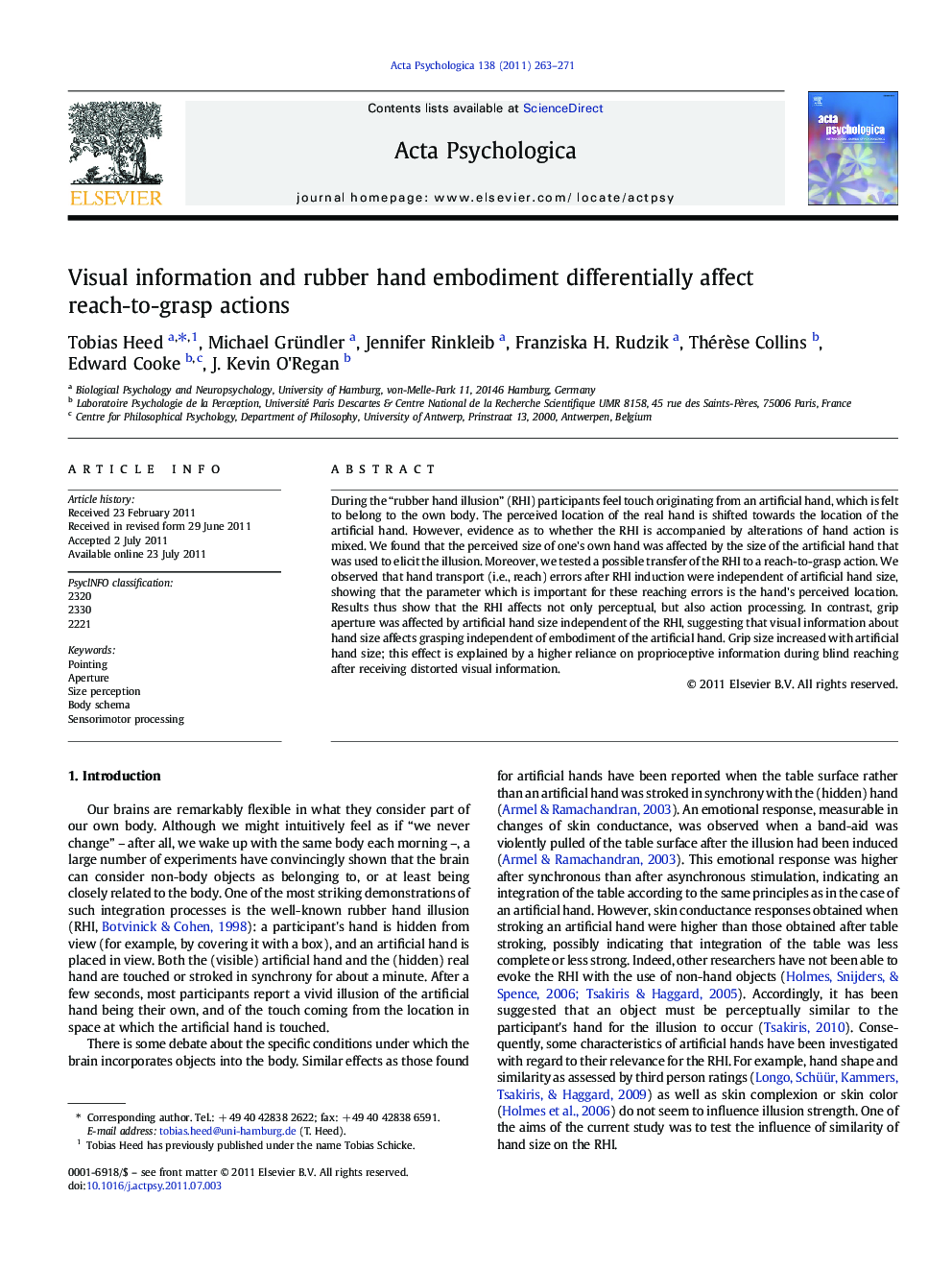| Article ID | Journal | Published Year | Pages | File Type |
|---|---|---|---|---|
| 920196 | Acta Psychologica | 2011 | 9 Pages |
During the “rubber hand illusion” (RHI) participants feel touch originating from an artificial hand, which is felt to belong to the own body. The perceived location of the real hand is shifted towards the location of the artificial hand. However, evidence as to whether the RHI is accompanied by alterations of hand action is mixed. We found that the perceived size of one's own hand was affected by the size of the artificial hand that was used to elicit the illusion. Moreover, we tested a possible transfer of the RHI to a reach-to-grasp action. We observed that hand transport (i.e., reach) errors after RHI induction were independent of artificial hand size, showing that the parameter which is important for these reaching errors is the hand's perceived location. Results thus show that the RHI affects not only perceptual, but also action processing. In contrast, grip aperture was affected by artificial hand size independent of the RHI, suggesting that visual information about hand size affects grasping independent of embodiment of the artificial hand. Grip size increased with artificial hand size; this effect is explained by a higher reliance on proprioceptive information during blind reaching after receiving distorted visual information.
► The rubber hand illusion was elicited with small and large artificial hands. ► Perceived hand size was affected by the size of the artificial hand. ► During grasping, hand transport was affected by the RHI independent of hand size. ► Conversely, grip aperture was affected by hand size independent of the RHI.
